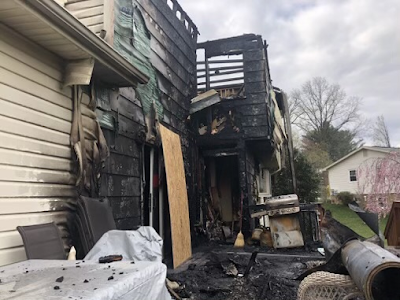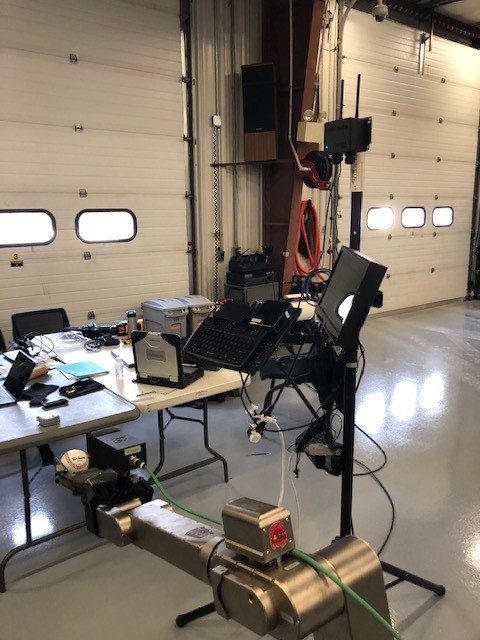For Spanish click here
Carbon Monoxide Alarms are a must for homes. When seconds count, you need an alarm that notifies you of potential danger so you can quickly take action. In 2019, a new law in Montgomery County went into effect requiring many existing single-unit, two-unit and townhouse dwellings to have Carbon Monoxide (CO) Alarms which alert occupants to the presence of potentially deadly gas.
The Law requires all single, two-unit, and townhouse dwellings built before 2008 that have a fuel-burning appliance, fireplace or attached garage to install and maintain CO Alarms on every level of the home and outside sleeping areas. Maryland State Law has required CO Alarms in newly-constructed homes since 2008 and in all rental occupancies.
Why are Carbon Monoxide Alarms important?
Carbon Monoxide is often called the "silent killer" because it is odorless, tasteless and invisible making this toxic gas one of the most overlooked, and potentially deadly, dangers in homes. CO Alarms monitor your home 24/7 and are designed to emit an alarm when high levels of CO are detected but before they reach life-threatening levels ... and only cost about $20.
Does the law apply to me?
Homes in Montgomery County built before 2008 that are powered by electricity and do not have a fuel-burning appliance, fireplace or attached garage are not required to install Carbon Monoxide Alarms however fire officials recommend CO Alarms in all homes.
What if my Carbon Monoxide Alarm sounds?
Immediately have everyone in the home get outdoors to fresh air and call 911 from outside the building. Because CO Alarms can detect low levels of carbon monoxide, your alarm may activate before anyone feels ill. Signs of CO poisoning don't always happen right away. CO poisoning can happen gradually over a period of days or even weeks, depending on the levels of CO in your home. Re-enter your home only after it has been deemed safe by emergency responders.
Where should Carbon Monoxide Alarms be installed?
Proper placement of CO Alarms is important and you want protection on every level of your home. For homes built before 2008, Montgomery County law requires that CO Alarms be installed:
- On every occupiable level of the residence including basements, excluding attics and crawl spaces.
- Outside sleeping areas.
For homes built after January 1, 2008 CO Alarms should be installed in accordance with the applicable building codes at the time of construction or alteration/modification. Always follow the manufacturer’s instructions when installing CO Alarms.
What type of Carbon Monoxide Alarms are available?
There are a wide variety of CO Alarms on the market and include battery-powered, plug-in and hard-wired CO Alarms and meet the requirements of the new law. Some newer alarms feature visual and verbal cues, instructions on what to do if the alarm activates and can be set to English or Spanish alerts.
What about Combination Smoke and Carbon Monoxide Alarms?
For years Smoke Alarms and CO Alarms were separate units. Recently, alarms have been manufactured that have the technology to detect both smoke and carbon monoxide. These "combination alarms" need to match the power source for the home's smoke alarms.
Are battery operated or hard wired Carbon Monoxide Alarms required by the new law?
For properties built before 2008, the power source for your CO Alarms can be battery operated, hard wired with a battery back-up or plug-in with a battery back-up. For combination Smoke and CO Alarms, the power supply must match the existing Code requirements for your home's smoke alarms.
At what height should Carbon Monoxide Alarms be installed?
Unlike smoke which rises to the ceiling, CO mixes with air. CO Alarms may be installed at any height. However, if a combination smoke/CO alarm is used it must be installed on or near the ceiling, per manufacturer’s instructions, to ensure that it can detect smoke effectively.
What are the symptoms of Carbon Monoxide poisoning?
The most common symptoms of CO poisoning are headache, dizziness, weakness, shortness of breath, upset stomach, chest pain and confusion. CO symptoms are often described as “flu-like.” Knowing the symptoms of carbon monoxide poisoning can help you respond quickly in the event of an emergency.
What do the different beeps mean?
A CO Alarm has different beep patterns to communicate whether there is an emergency or simply a service or maintenance issue. It is important to know the difference between the different beep patterns. Be sure to read the manufacturer’s instructions and information is often printed on the back of the alarm.
When should Carbon Monoxide Alarms be replaced?
Replace CO Alarms when the manufacturer’s replacement date is reached when the alarm fails to respond to an operability test, or the end-of-life signal is active. CO Alarms typically have a service life of 7 – 10 years.
Where can I get Carbon Monoxide Alarms?
CO Alarms are available for purchase at many stores and online. Only purchase alarms that are approved by UL (Underwriters Laboratories) in order to ensure that your alarms meet their strict testing and safety requirements. If you need assistance and live in Montgomery County, call 311 and a department representative will be in touch.








































